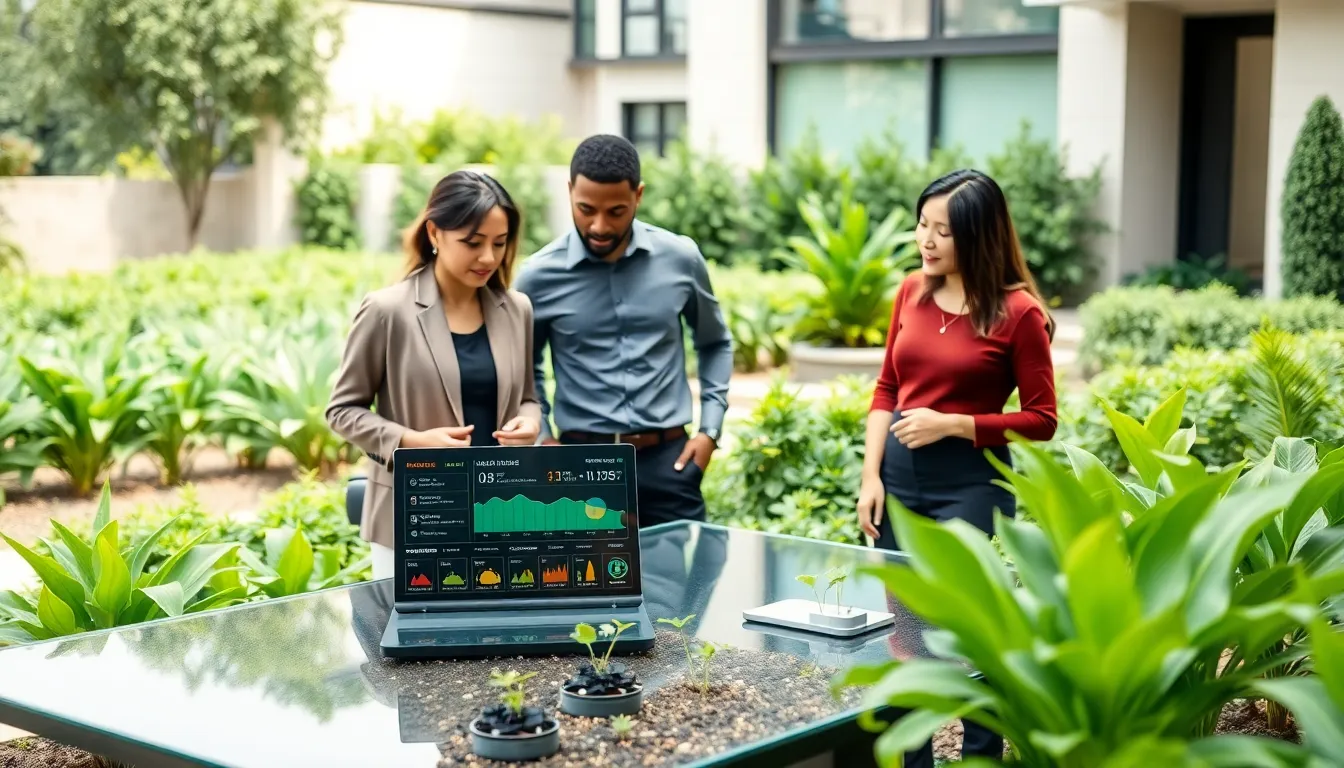Table of Contents
TogglePicture this: a world where lawns practically water themselves. Enter smart irrigation, the technological wizardry transforming how we nurture our green spaces. This isn’t just for green thumbs or eco-warriors: it’s a crucial innovation for real estate developers. Like a robust coffee blend, this article promises to perk up your understanding of how smart irrigation can enhance property value and reduce water bills, without turning you into a gardening guru. So, let’s jump into the clever world of smart irrigation flibbertigibbet as it weaves its magic through homerocketrealty and beyond.
Understanding Smart Irrigation Technology

Smart irrigation technology harnesses the power of sensors, weather data, and automation to optimize watering schedules. Gone are the days when sprinklers showered the yard at arbitrary intervals, often wasting precious resources. Instead, smart systems analyze soil moisture and climatic conditions, ensuring that plants receive exactly what they need exactly when they need it. At its core, it’s about efficiency, combining intelligence with irrigation to create a sustainable landscape. This technology uses various methods like ground moisture sensors and flow meters, providing real-time data that helps homeowners and developers maintain lush, vibrant properties with minimal water waste.
Benefits of Smart Irrigation Systems
The advantages of smart irrigation systems extend well beyond the initial investment. First and foremost, there’s the sustainability factor. By using less water, these systems promote conservation, making them appealing for environmentally conscious homeowners. Lower water usage often translates into reduced bills, allowing property owners to allocate their budgets more effectively. Also, smart irrigation contributes to healthier landscapes. With precise watering, plants thrive, leading to longer-lasting gardens and enhanced curb appeal. This improved aesthetics can be a game-changer for real estate, boosting property values and making listings more attractive. Finally, smart irrigation systems offer peace of mind. Homeowners can easily control and monitor their systems via smartphone apps, making irrigation a hassle-free affair.
Key Components of Smart Irrigation
Several essential components comprise a smart irrigation system. First up are sensors, which are the heart and soul of the setup. Soil moisture sensors gauge the existing moisture levels to determine when watering is necessary. Weather stations also play a critical role, providing data such as temperature, humidity, and rainfall predictions. This information helps the system make real-time adjustments. Controllers, typically the tech-savvy friends of the irrigation world, manage these components, ensuring optimal performance. Smart controllers can be programmed or adjusted remotely via mobile applications, so whether you’re lounging at home or vacationing in the tropics, you’ve got the reins. Last but not least, there are sprinklers and drip systems. These can be automated to deliver water directly where it’s needed, minimizing evaporation and runoff.
Integrating Smart Irrigation in Real Estate Development
For real estate developers, integrating smart irrigation into projects is about enhancing property appeal and ensuring sustainability. Prospective homebuyers are increasingly drawn to eco-friendly features, making smart irrigation a selling point. Developers can plan landscapes with smart systems from the ground up, creating attractions that stand out in competitive markets. Not only does it fulfill modern homeowners’ desires for sustainability, but it also sets a new standard in property development. By integrating this technology, developers can boost property values, reduce operational costs, and contribute to broader conservation efforts. A well-watered lawn inspires a sense of pride for homeowners, while also establishing a vibrant community. Properties with innovative irrigation systems often showcase lower maintenance requirements and healthier outdoor spaces.
Challenges and Considerations in Implementation
While the advantages of smart irrigation systems are enticing, there are hurdles to consider. For one, the upfront costs can be substantial, especially for large-scale developments. Homeowners might feel uncertain about the technology and require education on its use and benefits. Also, maintaining and servicing the systems can sometimes pose challenges. It’s essential to have skilled technicians capable of managing the technology. Developers must also navigate local regulations about water usage and irrigation practices. These considerations necessitate thorough planning and investment, but the potential return, in savings and enhanced property sales, is often well worth it.
Future Trends in Smart Irrigation
As technology advances, smart irrigation systems are set to become even more sophisticated. Innovations such as artificial intelligence and machine learning will enable systems to learn patterns and predict irrigation needs with unrivaled accuracy. Integrating with other smart home technologies could lead to a seamless home management experience, blending climate control and irrigation into one coherent system. Besides, the increasing emphasis on sustainable development practices will likely enhance government and corporate backing for smart irrigation solutions. The future might also see better connectivity options between devices, creating a more interactive experience for users. Imagine receiving alerts on your smartphone not just about watering but also about soil health, pest problems, or lawn care tips.




